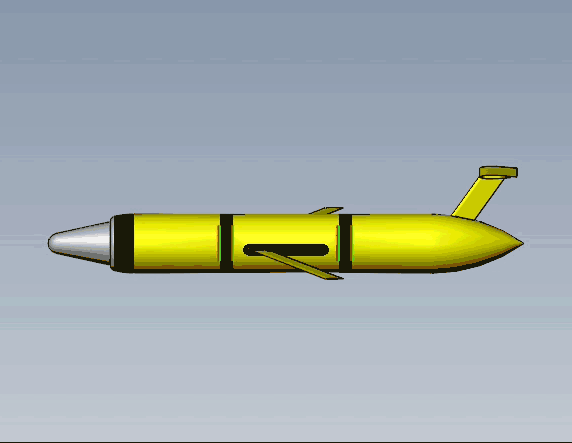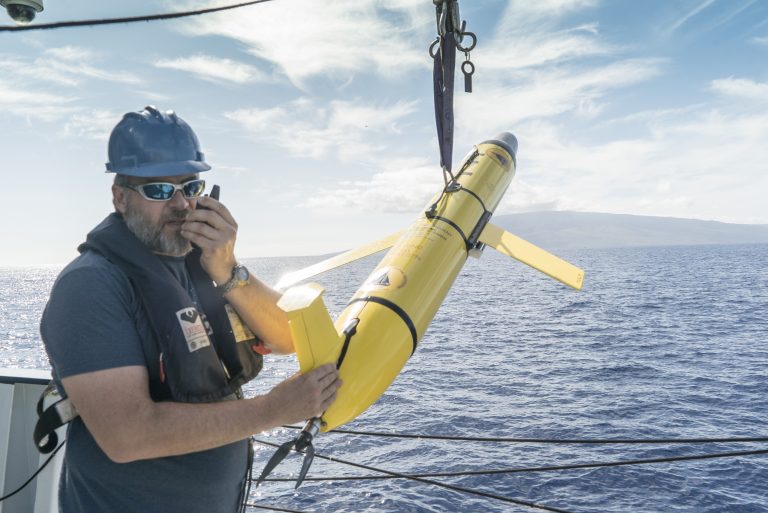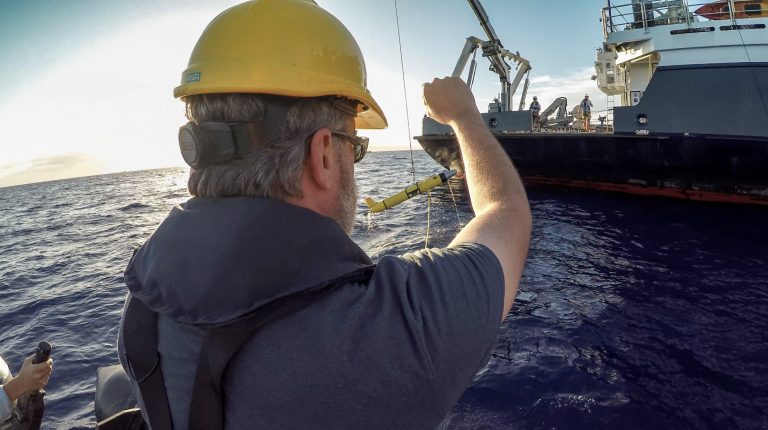To adrenaline-seeking daredevils, hang gliding through midtown Manhattan may sound like a fun idea. Yet even the most adventurous risk-takers would be unwilling to start such a journey without a very good way to plan and modify their trajectories on the fly, detecting shifts in their intended path and adjusting to outside forces like wind gusts.

Drs. Richard Camilli and Angelos Mallios from Woods Hole Oceanographic Institution have in mind a similar kind of mission, in terms of complexity and difficulty. Just like a hang glider, their Slocum glider uses the currents around it (and very little energy) to navigate through hazardous environments. Big differences between the two include not only being underwater, but the Slocum glider is unmanned and seeking to work in coordination with a suite of different Autonomous Underwater Vehicles and while taking useful oceanographic data. In time, the lessons learned will be applied in outer space. The goal is ambitious, to say the least.
Hunger
During the Coordinated Robotics expedition, Drs. Camilli and Mallios’ focus is not the hardware of the glider, but its software. “What we’re working on is using a sonar, coupled with the vehicle’s control and a planning system, so that the vehicle can use what is called terrain-aided navigation. It will actually navigate around obstacles based on what the sonar is sensing,” explains Dr. Camilli.
The team expects the glider to be able to operate for weeks at a time without requiring recharge while navigating in a GPS denied environment. “Generally speaking, the most interesting places to explore can also be the most dangerous,” Says Dr. Camilli. “What we are looking at is enabling these gliders to operate in hazardous environments.” When compared to other AUVs, the gliders have a rudimentary navigation system, so they tend to be operated exclusively in open ocean conditions. Yet by using terrain-aided navigation and automated replanning, the WHOI team will be able to operate the gliders in close proximity to hazards.

In order to achieve autonomy within the glider’s functions, they must face one immediate challenge: hunger. Instruments that are commonly used for precision navigation are very large and power hungry. An inertial navigation system (INS), which is the most precise way of navigating, will typically require 25 to 30 watts from the AUV. Add to that the rest of its system’s requirements and the power budget will increase to a minimum of 50 watts total. “By saving power, the glider is able to operate for longer periods of time,” explains Dr. Mallios. “A standard AUV using the same energy as the glider will only operate for a few hours, whereas the glider could do so for weeks.” The glider will consume around 5 watts while operating at maximum speed, about the same power-budget as a cell phone.
On Falkor, the team is striving to refine the sonar’s techniques for terrain-aided navigation. The sonar they are using runs at about two watts, which enables it to emit very weak acoustic waves into the water. The waves must then bounce against different obstacles on the seafloor and travel back to the glider’s sensors, which means it the glider is detecting very small signals. Dr. Mallios is looking for effective ways to interpret that information as it comes back. “This is analogous to what self-driving cars do,” explains Dr. Camilli, “but unlike a car, we are operating in three dimensions, without GPS, or any lines painted on a highway.”

Outer Space
Autonomy is the key word. The techniques and robotic solutions being developed during this expedition will go much further than the ‘Au ‘Au Channel, off to water worlds in outer space. NASA is running a program focused on developing new types of autonomy for exploring water worlds, like Europa, Titan or Enceladus. “These vehicles represent a proof of concept,” explains Dr. Mallios. “We will be using all of these techniques, knowledge, and sensors when going to space. NASA is funding our research as a way to develop technology to send to space, using equivalent problems on Earth, in the ocean.”
Think of the glider as a butterfly: It is fragile and not very powerful. In order to fly in hazardous conditions it must make use of the natural dynamics of the environment. “Through the planning software, we have been able to intelligently use the currents so that in the same way that space probes take advantage of planet’s gravity to accelerate them, we are using the currents to accelerate us and save power, instead of fighting them,” he explains.
In outer space, this glider would be completely out of place, but the autonomy techniques being born on Falkor will prove essential. NASA’s requirement is that the space probes must consume roughly the same amount of energy as the glider and last for a month.

On Its Way
As the day nears to an end, Dr. Camilli and Dr. Mallios ride on board Atreyu, one of Falkor’s work boats, to recover their Slocum Glider. The maneuver is extremely delicate on account of the glider sonar’s sensitivity. “The sonar fits in the palm of my hand, yet it costs way more than my car,” says Dr. Camilli as he directs the operation. Once again, the glider comes back to Falkor unharmed.
“Eventually, we will layer back a chemical sensor payload that will be able to detect trace chemicals in the water column in order to hunt for places where new forms of life may exist,” Dr. Camilli foresees. “One day we hope to have these systems going out and operating in such a way that they will replace a lot of the other big pieces of equipment we are using now, in a non-invasive way, and with minimal impact to the ocean”.


